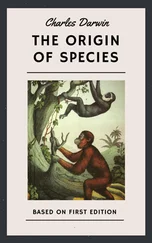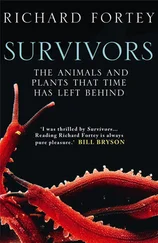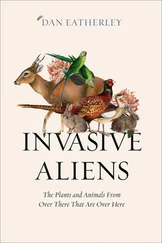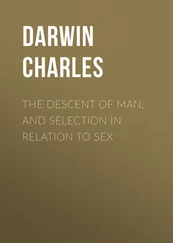Charles Darwin - The Variation of Animals and Plants under Domestication — Volume 2
Здесь есть возможность читать онлайн «Charles Darwin - The Variation of Animals and Plants under Domestication — Volume 2» — ознакомительный отрывок электронной книги совершенно бесплатно, а после прочтения отрывка купить полную версию. В некоторых случаях можно слушать аудио, скачать через торрент в формате fb2 и присутствует краткое содержание. Жанр: foreign_antique, foreign_prose, на английском языке. Описание произведения, (предисловие) а так же отзывы посетителей доступны на портале библиотеки ЛибКат.
- Название:The Variation of Animals and Plants under Domestication — Volume 2
- Автор:
- Жанр:
- Год:неизвестен
- ISBN:нет данных
- Рейтинг книги:3 / 5. Голосов: 1
-
Избранное:Добавить в избранное
- Отзывы:
-
Ваша оценка:
- 60
- 1
- 2
- 3
- 4
- 5
The Variation of Animals and Plants under Domestication — Volume 2: краткое содержание, описание и аннотация
Предлагаем к чтению аннотацию, описание, краткое содержание или предисловие (зависит от того, что написал сам автор книги «The Variation of Animals and Plants under Domestication — Volume 2»). Если вы не нашли необходимую информацию о книге — напишите в комментариях, мы постараемся отыскать её.
The Variation of Animals and Plants under Domestication — Volume 2 — читать онлайн ознакомительный отрывок
Ниже представлен текст книги, разбитый по страницам. Система сохранения места последней прочитанной страницы, позволяет с удобством читать онлайн бесплатно книгу «The Variation of Animals and Plants under Domestication — Volume 2», без необходимости каждый раз заново искать на чём Вы остановились. Поставьте закладку, и сможете в любой момент перейти на страницу, на которой закончили чтение.
Интервал:
Закладка:
These latter facts remind us of the statements, so frequently made by travellers in all parts of the world, on the degraded state and savage disposition of crossed races of man. That many excellent and kind-hearted mulattos have existed no one will dispute; and a more mild and gentle set of men could hardly be found than the inhabitants of the island of Chiloe, who consist of Indians commingled with Spaniards in various proportions. On the other hand, many years ago, long before I had thought of the present subject, I was struck with the fact that, in South America, men of complicated descent between Negroes, Indians, and Spaniards, seldom had, whatever the cause might be, a good expression. (13/47. 'Journal of Researches' 1845 page 71.) Livingstone — and a more unimpeachable authority cannot be quoted, — after speaking of a half-caste man on the Zambesi, described by the Portuguese as a rare monster of inhumanity, remarks, "It is unaccountable why half-castes, such as he, are so much more cruel than the Portuguese, but such is undoubtedly the case." An inhabitant remarked to Livingstone, "God made white men, and God made black men, but the Devil made halfcastes." (13/48. 'Expedition to the Zambesi' 1865 pages 25, 150.) When two races, both low in the scale, are crossed the progeny seems to be eminently bad. Thus the noble- hearted Humboldt, who felt no prejudice against the inferior races, speaks in strong terms of the bad and savage disposition of Zambos, or half-castes between Indians and Negroes; and this conclusion has been arrived at by various observers. (13/49. Dr. P. Broca on 'Hybridity in the Genus Homo' English translation 1864 page 39.) From these facts we may perhaps infer that the degraded state of so many half-castes is in part due to reversion to a primitive and savage condition, induced by the act of crossing, even if mainly due to the unfavourable moral conditions under which they are generally reared.
SUMMARY ON THE PROXIMATE CAUSES LEADING TO REVERSION.
When purely-bred animals or plants reassume long-lost characters, — when the common ass, for instance, is born with striped legs, when a pure race of black or white pigeons throws a slaty-blue bird, or when a cultivated heartsease with large and rounded flowers produces a seedling with small and elongated flowers, — we are quite unable to assign any proximate cause. When animals run wild, the tendency to reversion, which, though it has been greatly exaggerated, no doubt exists, is sometimes to a certain extent intelligible. Thus, with feral pigs, exposure to the weather will probably favour the growth of the bristles, as is known to be the case with the hair of other domesticated animals, and through correlation the tusks will tend to be redeveloped. But the reappearance of coloured longitudinal stripes on young feral pigs cannot be attributed to the direct action of external conditions. In this case, and in many others, we can only say that any change in the habits of life apparently favour a tendency, inherent or latent in the species, to return to the primitive state.
It will be shown in a future chapter that the position of flowers on the summit of the axis, and the position of seeds within the capsule, sometimes determine a tendency towards reversion; and this apparently depends on the amount of sap or nutriment which the flower-buds and seeds receive. The position, also, of buds, either on branches or on roots, sometimes determines, as was formerly shown, the transmission of the character proper to the variety, or its reversion to a former state.
We have seen in the last section that when two races or species are crossed there is the strongest tendency to the reappearance in the offspring of long- lost characters, possessed by neither parent nor immediate progenitor. When two white, or red, or black pigeons, of well-established breeds, are united, the offspring are almost sure to inherit the same colours; but when differently-coloured birds are crossed, the opposed forces of inheritance apparently counteract each other, and the tendency which is inherent in both parents to produce slaty-blue offspring becomes predominant. So it is in several other cases. But when, for instance, the ass is crossed with E. indicus or with the horse — animals which have not striped legs — and the hybrids have conspicuous stripes on their legs and even on their faces, all that can be said is, that an inherent tendency to reversion is evolved through some disturbance in the organisation caused by the act of crossing.
Another form of reversion is far commoner, indeed is almost universal with the offspring from a cross, namely, to the characters proper to either pure parent-form. As a general rule, crossed offspring in the first generation are nearly intermediate between their parents, but the grandchildren and succeeding generations continually revert, in a greater or lesser degree, to one or both of their progenitors. Several authors have maintained that hybrids and mongrels include all the characters of both parents, not fused together, but merely mingled in different proportions in different parts of the body; or, as Naudin (13/50. 'Nouvelles Archives du Museum' tome 1 page 151.) has expressed it, a hybrid is a living mosaic-work, in which the eye cannot distinguish the discordant elements, so completely are they intermingled. We can hardly doubt that, in a certain sense, this is true, as when we behold in a hybrid the elements of both species segregating themselves into segments in the same flower or fruit, by a process of self-attraction or self-affinity; this segregation taking place either by seminal or bud-propagation. Naudin further believes that the segregation of the two specific elements or essences is eminently liable to occur in the male and female reproductive matter; and he thus explains the almost universal tendency to reversion in successive hybrid generations. For this would be the natural result of the union of pollen and ovules, in both of which the elements of the same species had been segregated by self-affinity. If, on the other hand, pollen which included the elements of one species happened to unite with ovules including the elements of the other species, the intermediate or hybrid state would still be retained, and there would be no reversion. But it would, as I suspect, be more correct to say that the elements of both parent-species exist in every hybrid in a double state, namely, blended together and completely separate. How this is possible, and what the term specific essence or element may be supposed to express, I shall attempt to show in the chapter on the hypothesis of pangenesis.
But Naudin's view, as propounded by him, is not applicable to the reappearance of characters lost long ago by variation; and it is hardly applicable to races or species which, after having been crossed at some former period with a distinct form, and having since lost all traces of the cross, nevertheless occasionally yield an individual which reverts (as in the case of the great- great-grandchild of the pointer Sappho) to the crossing form. The most simple case of reversion, namely, of a hybrid or mongrel to its grandparents, is connected by an almost perfect series with the extreme case of a purely-bred race recovering characters which had been lost during many ages; and we are thus led to infer that all the cases must be related by some common bond.
Gartner believed that only highly sterile hybrid plants exhibit any tendency to reversion to their parent-forms. This erroneous belief may perhaps be accounted for by the nature of the genera crossed by him, for he admits that the tendency differs in different genera. The statement is also directly contradicted by Naudin's observations, and by the notorious fact that perfectly fertile mongrels exhibit the tendency in a high degree, — even in a higher degree, according to Gartner himself, than hybrids. (13/51. 'Bastarderzeugung' s. 582, 438, etc.)
Читать дальшеИнтервал:
Закладка:
Похожие книги на «The Variation of Animals and Plants under Domestication — Volume 2»
Представляем Вашему вниманию похожие книги на «The Variation of Animals and Plants under Domestication — Volume 2» списком для выбора. Мы отобрали схожую по названию и смыслу литературу в надежде предоставить читателям больше вариантов отыскать новые, интересные, ещё непрочитанные произведения.
Обсуждение, отзывы о книге «The Variation of Animals and Plants under Domestication — Volume 2» и просто собственные мнения читателей. Оставьте ваши комментарии, напишите, что Вы думаете о произведении, его смысле или главных героях. Укажите что конкретно понравилось, а что нет, и почему Вы так считаете.












